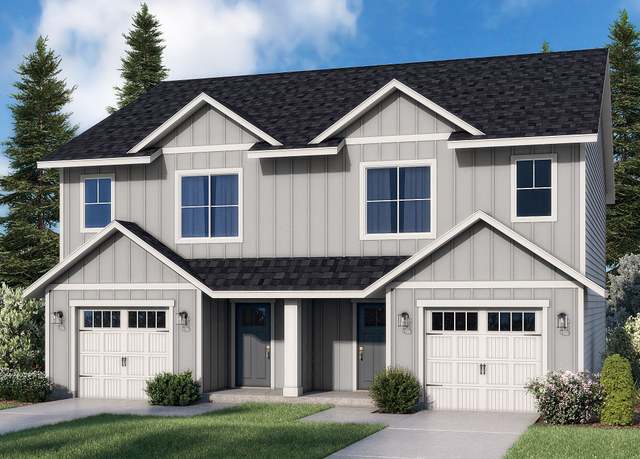The VA loan program, backed by the U.S. Department of Veterans Affairs (VA), provides a valuable home-buying option for veterans, active-duty service members, and eligible surviving spouses. One of the significant advantages of the VA loan is that it offers flexible options for purchasing different types of properties.
While many assume that VA loans are solely for single-family homes, this loan program can also be used to buy multi-family properties, opening up opportunities for veterans who are interested in real estate investing or generating rental income.
In this article, we will explore how veterans and service members can use their VA loan benefits to buy a multi-family home, the eligibility requirements, and how to navigate the process of securing financing for a multi-family property.
In this Article
What Is a Multi-Family Home?
A multi-family home is a residential property designed to house more than one family in separate units. These homes can range from duplexes (two units) to triplexes (three units) and fourplexes (four units). While properties with five or more units are classified as commercial real estate, the VA loan program allows borrowers to purchase multi-family properties with up to four units.
Here’s a breakdown of the types of multi-family homes that can be purchased using a VA loan:
| Property Type | Number of Units |
|---|---|
| Duplex | 2 |
| Triplex | 3 |
| Fourplex | 4 |
These types of properties offer veterans the potential to live in one unit while renting out the others, which can be a smart financial strategy for building wealth and covering mortgage costs.
VA Loan Requirements for Multi-Family Homes
While VA loans offer excellent benefits, purchasing a multi-family home with a VA loan comes with specific requirements. These requirements ensure that veterans are using the loan primarily for personal use and are capable of managing the financial responsibilities of owning a multi-unit property.
1. Owner Occupancy Requirement
One of the key stipulations for using a VA loan to purchase a multi-family property is that the borrower must live in one of the units as their primary residence. The VA loan program is designed to help veterans and service members purchase homes to live in, so it cannot be used exclusively for investment purposes.
- You must occupy one unit as your primary residence: This means you can live in one of the units and rent out the others to generate rental income.
- 60-day occupancy rule: You are typically required to move into the home within 60 days of closing. However, exceptions can be made for service members deployed or stationed away from home.
2. Property Condition
The property being purchased must meet the VA’s minimum property requirements (MPRs). These requirements ensure that the home is safe, sanitary, and structurally sound. For multi-family homes, all units must meet these standards, not just the unit that the borrower will occupy. Common MPRs include:
- No major structural defects
- Functional plumbing, heating, and electrical systems
- Adequate roofing
- Safe access to the home
- No health hazards like lead-based paint
3. Rental Income Consideration
One of the advantages of purchasing a multi-family home with a VA loan is that the rental income from the additional units can be used to help you qualify for the loan. However, there are specific guidelines for using rental income:
- Future rental income can be counted toward your income: Lenders may allow a portion of the projected rental income from the additional units to be included in your qualifying income.
- Rental income is typically verified through a market analysis: Lenders may require a rental analysis to determine how much you can reasonably expect to earn from renting out the units.
4. Debt-to-Income (DTI) Ratio
Your debt-to-income ratio is an important factor in determining your eligibility for a VA loan. Lenders typically prefer a DTI ratio of 41% or lower, but this requirement can vary. When purchasing a multi-family home, rental income from the other units can be factored into the DTI calculation, making it easier to qualify.
Advantages of Buying a Multi-Family Home with a VA Loan
Purchasing a multi-family property with a VA loan can offer significant benefits for veterans and service members. Below are some key advantages:
1. No Down Payment
One of the most significant advantages of a VA loan is that it does not require a down payment. This benefit extends to multi-family homes as well, meaning you can purchase a duplex, triplex, or fourplex with zero down. This can help veterans get into real estate without needing a large upfront payment.
2. No Private Mortgage Insurance (PMI)
Conventional loans often require private mortgage insurance (PMI) when the borrower makes a down payment of less than 20%. However, VA loans do not require PMI, even if you make no down payment. This can save you hundreds of dollars per month on mortgage payments.
3. Generate Rental Income
By renting out the additional units in a multi-family home, you can generate rental income that can help cover your mortgage payments or provide extra income. This makes purchasing a multi-family home an attractive option for veterans who want to invest in real estate while still benefiting from VA loan advantages.
4. Build Long-Term Wealth
Owning a multi-family property allows veterans to build wealth over time. As property values appreciate, the equity in the home increases, and rental income can provide a consistent stream of cash flow. Additionally, living in one unit while renting out others allows you to reduce your housing costs and reinvest savings into other financial goals.
Potential Challenges of Buying a Multi-Family Home with a VA Loan
While there are numerous advantages to using a VA loan to buy a multi-family property, there are also some challenges to consider:
1. Property Management
Owning a multi-family property means taking on the role of a landlord. This includes managing tenants, collecting rent, handling repairs, and maintaining the property. Being a landlord can be time-consuming and requires good organization and problem-solving skills.
2. Rental Income Requirements
While rental income can be used to help you qualify for a loan, lenders may only count a portion of the projected income. Additionally, if you are purchasing a property with vacant units, lenders may require you to prove that the units will generate rental income, which can complicate the approval process.
3. VA Funding Fee
While VA loans offer many cost-saving benefits, they do require a VA funding fee. This fee helps offset the cost of the VA loan program to taxpayers and can be rolled into the loan. The funding fee for first-time VA loan borrowers is 2.3% of the loan amount, and for subsequent uses, it can be up to 3.6%. However, veterans with a service-connected disability may be exempt from the funding fee.
How to Buy a Multi-Family Home with a VA Loan
If you’re considering purchasing a multi-family home with a VA loan, here’s a step-by-step guide to help you through the process:
1. Obtain Your Certificate of Eligibility (COE)
To use a VA loan, you’ll need to obtain a Certificate of Eligibility (COE) from the Department of Veterans Affairs. The COE proves that you meet the service requirements to qualify for a VA loan. You can apply for a COE online through the VA’s eBenefits portal, through your lender, or by mail.
2. Get Pre-Approved for a VA Loan
Before you start looking for properties, it’s essential to get pre-approved for a VA loan. This involves submitting your financial documents (e.g., pay stubs, tax returns, bank statements) to your lender for review. Pre-approval will give you a clear understanding of your loan limit and how much you can afford.
3. Find a Real Estate Agent Who Understands VA Loans
Working with a real estate agent who has experience with VA loans and multi-family properties is crucial. They can help you navigate the specific requirements of the VA loan program and find properties that meet the VA’s guidelines.
4. Search for Multi-Family Homes
Once you’re pre-approved, start searching for multi-family homes that meet your needs. Keep in mind that you must occupy one of the units as your primary residence, so consider factors like location, unit condition, and rental potential.
5. Make an Offer
When you find the right property, your agent will help you make an offer. Be prepared to negotiate, as sellers of multi-family properties may have different expectations than those selling single-family homes. Your offer will be contingent on obtaining financing and passing the VA’s property appraisal and inspection.
6. Complete the VA Loan Appraisal and Inspection
Once your offer is accepted, the property will need to go through a VA appraisal to ensure it meets the VA’s minimum property requirements. Additionally, you may want to hire a home inspector to check for any potential issues with the property’s structure, plumbing, or electrical systems.
7. Close the Loan and Move In
After the appraisal and inspection are complete, you’ll move forward with closing the loan. At closing, you’ll sign the necessary documents, pay the VA funding fee (if applicable), and take ownership of the property. You’ll need to move into one of the units within 60 days of closing.
Frequently Asked Questions (FAQs)
1. Can I use a VA loan to buy a fourplex?
Yes, you can use a VA loan to buy a fourplex, as long as you live in one of the units as your primary residence.
2. Can rental income from a multi-family home help me qualify for a VA loan?
Yes, lenders can include a portion of the projected rental income from the additional units when calculating your qualifying income for the VA loan.
3. Do I have to live in the multi-family home I purchase with a VA loan?
Yes, you must occupy one of the units as your primary residence, in accordance with VA loan requirements.
4. Can I use a VA loan to buy a property with more than four units?
No, VA loans are only available for properties with up to four units. Properties with five or more units are considered commercial real estate.
5. Can I use a VA loan for an investment property?
VA loans are intended for primary residences, but you can rent out additional units in a multi-family property as long as you live in one unit.
6. What is the VA funding fee for a multi-family home?
The VA funding fee for a first-time use VA loan is 2.3%, and for subsequent uses, it can be up to 3.6%. Veterans with a service-connected disability may be exempt from this fee.
The Bottom Line
Using a VA loan to buy a multi-family home is an excellent opportunity for veterans and service members to generate rental income while benefiting from the VA loan’s advantages.
By living in one unit and renting out the others, you can significantly reduce your housing costs or even create additional income streams.
With no down payment, no PMI, and the ability to use rental income toward loan qualification, the VA loan program provides a unique opportunity for veterans to invest in real estate and build long-term wealth.

















